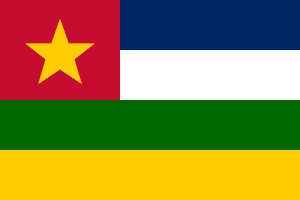Language/Pulaar/Vocabulary/Colors
Hi Pulaar learners! 😊
In this lesson, we will learn the basic colors in Pulaar. Knowing colors is not only practical, but also a fun and creative way to learn. You can use colors to describe objects, clothing, foods, animals, and even emotions!
Have you ever noticed how colors are often associated with certain meanings or emotions in different cultures? In Pulaar culture, for example, the color white is often associated with purity or peace, while the color black may be associated with mourning or sadness. By learning colors in Pulaar, you will not only improve your language skills, but also learn more about the culture.
To make the most of this lesson, I recommend practicing with native speakers. You can find native speakers on the Polyglot Club website and ask them any questions. You can also check out the Vocabulary section of our Pulaar course.
Let's get started, shall we?
Basic Colors[edit | edit source]
The basic colors in Pulaar are:
| Pulaar | Pronunciation | English |
|---|---|---|
| xeesal | /khe'-saal/ | red |
| jilaaŋ | /jee-laaŋ/ | yellow |
| sabbaŋ | /sahb-baŋ/ | green |
| njaay | /njaa-y/ | blue |
| muluŋ | /moo-looŋ/ | black |
| daw | /daw/ | white |
| foforo | /fo-fo-ro/ | brown |
As you can see, colors in Pulaar have a distinct sound and rhythm. Take note of the tones and try to pronounce them as accurately as possible.
It's important to remember that Pulaar, like many African languages, has variations in pronunciation and spelling depending on the speaker and geographical location. So if you're practicing with a native speaker, don't be surprised if their pronunciation sounds slightly different from what you see here.
Advanced Colors[edit | edit source]
Now that we've covered the basic colors, let's take a look at some more advanced colors. These colors are less common but still useful to know.
| Pulaar | Pronunciation | English |
|---|---|---|
| feero | /fe-ro/ | pink |
| yooro | /yoo-ro/ | orange |
| lufaar | /loo-faar/ | purple |
| bergu | /ber-gu/ | gray |
Perhaps you've noticed that some of these colors sound similar to colors in English. For example, "pink" in Pulaar is "feero," which sounds a bit like "pink" in English. This is not a coincidence! Many languages around the world borrow words from other languages, and Pulaar is no exception.
Use these advanced colors to add more detail and variety to your descriptions in Pulaar!
Using Colors in Context[edit | edit source]
Now, let's practice using colors in context with a dialogue:
- Person 1: Jeexatal shameeŋ du lukku yobanu. (/jee-khataal sha-mayŋ duh loo-koo yo-ba-nu/) (I bought a red shirt yesterday.)
- Person 2: Xana neɗɗo simpi ndallu foforo? (/khana ne'-ddo sim-pee ndal-loo fo-fo-ro/) (Can you pass me the brown pencil?)
- Person 1: Awo, haa njaay xamnoon. (/awo, haa ndzaa-y kham-noon/) (Sure, here is the blue pen.)
- Person 2: Jaɓɓo luufaral feeñi yontii. (/dza'-bbo loo-fa-ral fee'-ñee yon-tee/) (I really like the purple flowers today.)
- Person 1: Huunde dawalu ɗam kattaama. (/huun-deh da-wa-loo ddum kat-taa-ma/) (The white clouds are so beautiful.)
In this dialogue, you can see different ways of using colors in context. Try creating your own dialogue using colors and practice with a native speaker to improve your skills!
Conclusion[edit | edit source]
Congratulations! You now know the basic and advanced colors in Pulaar. By using colors in your daily conversations, you are not only improving your language skills, but also learning more about the culture. Don't be afraid to make mistakes and continue practicing with native speakers.
Remember, one of the best ways to learn a language is to immerse yourself in the culture. So go out there, explore, and have fun with Pulaar!
➡ If you have any questions, please ask them in the comments section below.
➡ Feel free to edit this wiki page if you think it can be improved. 😎
Impressive work on finishing this lesson! Explore these additional pages to enhance your understanding: Food & Education.
Other Lessons[edit | edit source]
- Count to 10
- Food
- Feelings and Emotions
- Education
- Clothes
- Family
- Geography
- How to Say Hello and Greetings
- Days of the Week
- Drinks
Sources[edit | edit source]
- Pulaar: the colour spectrum [English translation | Maneno Matamu ...]

